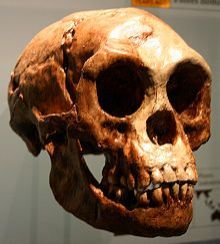Hobbit-Like Humanoid Found In Indonesia Not New Species, Suffered Down Syndrome

The skeletal remains found in Indonesia initially thought to be a new species of human likened to a Hobbit actually was a deformed individual who likely suffered from Down syndrome, U.S., Australian and Chinese researchers say. The remains were found in 2004 on the island of Flores and were dubbed Homo floresiensis.
The remains, about 15,000 years old, consisted of a skull and thigh bone and researchers said the specimen was about 3.5 feet tall. Homo floresiensis shared some traits with Homo erectus and Astralopithecus but had other traits that were different, leading to the initial supposition it was a new species.
A re-examination of the remains, however, shows the cranial volume is consistent "for a modern human with Down syndrome from the same geographic region," concluded Robert B. Eckhardt, professor of developmental genetics and evolution at Penn State University.
"When we first saw these bones, several of us immediately spotted a developmental disturbance," Eckhardt said in a press release, "but we did not assign a specific diagnosis because the bones were so fragmentary. Over the years, several lines of evidence have converged on Down syndrome."
Maciej Henneberg, professor of anatomy and pathology at the University of Adelaide, and Kenneth Hsü, a Chinese geologist and paleoclimatologist, were also involved in the reanalysis, published this week in the Proceedings of the National Academy of Sciences.
© Copyright IBTimes 2024. All rights reserved.






















